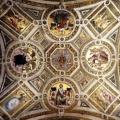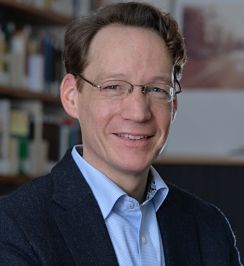360. Dag N. Hasse on Arabic Learning in the Renaissance
An interview with Dag Nikolaus Hasse on the Renaissance reception of Averroes, Avicenna, and other authors who wrote in Arabic.
Themes:
• D.N. Hasse, “Aristotle versus Progress: The Decline of Avicenna´s De animaas a Model for Philosophical Psychology in the Latin West,” in J.A. Aertsen and A. Speer (eds), Was ist Philosophie im Mittelalter? (Berlin: 1998), 871-80.
• D.N. Hasse, Avicenna’s De Anima in the Latin West. The Formation of a Peripatetic Philosophy of the Soul, 1160-1300 (London: 2000).
• D.N. Hasse, “Aufstieg und Niedergang des Averroismus in der Renaissance: Niccolò Tignosi, Agostino Nifo, Francesco Vimercato,” in J.A. Aertsen and M. Pickavé (eds), “Herbst des Mittelalters”? Fragen zur Bewertung des 14. und 15. Jahrhunderts (Berlin: 2004), 447-73.
• D.N. Hasse, “The Attraction of Averroism in the Renaissance: Vernia, Achillini, Prassicio,” in P. Adamson, H. Baltussen, M.W.F. Stone (eds), Philosophy, Science and Exegesis in Greek, Arabic and Latin Commentaries (London: 2004) vol. 2, 131-47.
• D.N. Hasse, “The Social Conditions of the Arabic-(Hebrew-)Latin Translation Movementsin Medieval Spain and in the Renaissance,” in A. Speer and L. Wegener (eds), Wissen über Grenzen: Arabisches Wissen und lateinisches Mittelalter (Berlin: 2006), 68-86.
• D.N. Hasse, “Spontaneous Generation and the Ontology of Forms in Greek, Arabic, and Medieval Latin Sources,” in P. Adamson (ed.), Classical Arabic Philosophy: Sources and Reception (London: 2007), 150-75.
• D.N. Hasse, Latin Averroes Translations of the First Half of the Thirteenth Century (Hildesheim: 2010).
• D.N. Hasse and A. Bertolacci (eds), The Arabic, Hebrew and Latin Reception of Avicenna’s Metaphysics (Berlin: 2012).
• D.N. Hasse, "Averroes' Critique of Ptolemy and its Reception by John of Jandun and Agostino Nifo," in P.J.J.M. Bakker (ed.), Averroes' Natural Philosophy and its Reception in the Latin West (Leuven: 2015), 69-88.
• D.N. Hasse, Success and Suppression: Arabic Sciences and Philosophy in the Renaissance (Cambridge MA: 2016).
• D.N. Hasse and A. Bertolacci (eds), The Arabic, Hebrew and Latin Reception of Avicenna’s Physics and Cosmology (Berlin: 2018).
Prof Hasse's University web page







Comments
Wrong link
Hi,
The link for the transcript refers to the episode page itself (i.e. is "cyclic"). It should be https://historyofphilosophy.net/transcript/arabic-learning-hasse
In reply to Wrong link by Joris Cator
Transcript link
Thanks! I have fixed that.
Add new comment